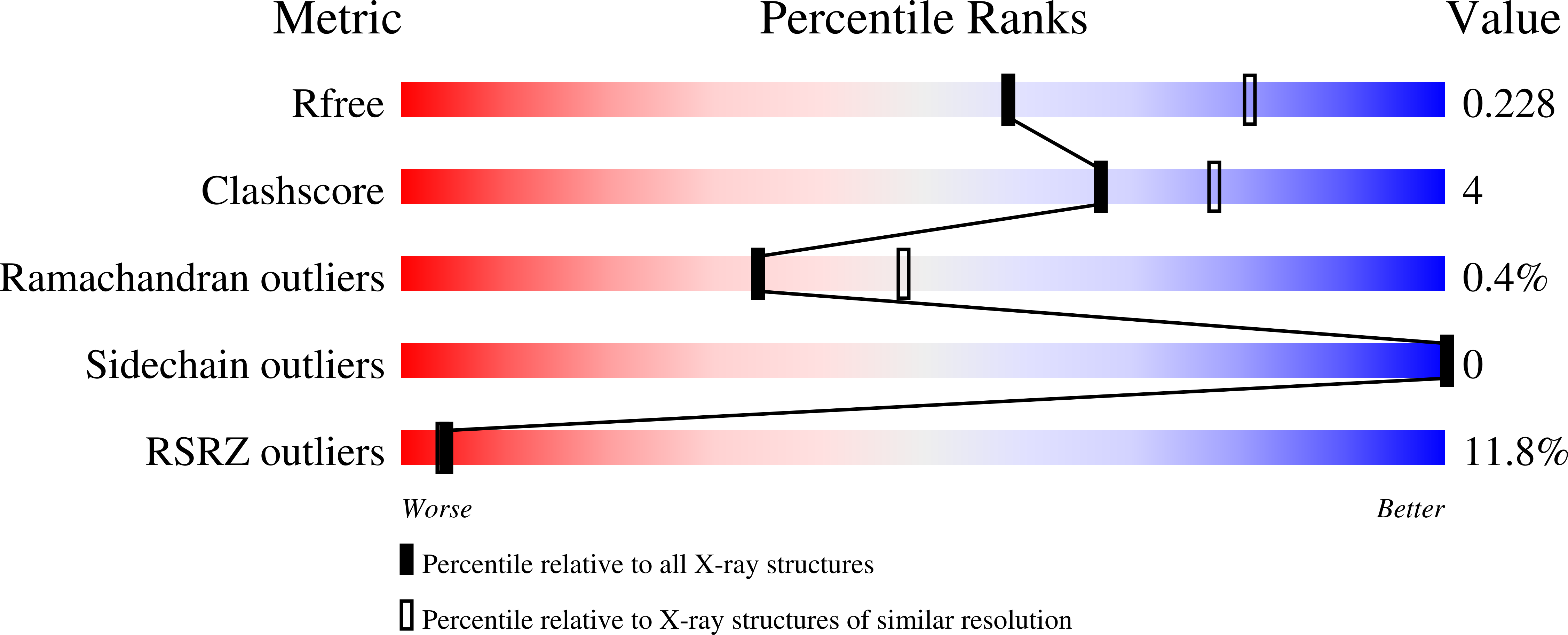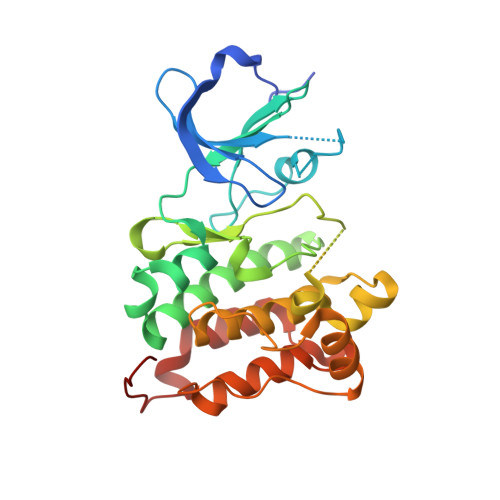Leveraging Compound Promiscuity to Identify Targetable Cysteines within the Kinome.
Rao, S., Gurbani, D., Du, G., Everley, R.A., Browne, C.M., Chaikuad, A., Tan, L., Schroder, M., Gondi, S., Ficarro, S.B., Sim, T., Kim, N.D., Berberich, M.J., Knapp, S., Marto, J.A., Westover, K.D., Sorger, P.K., Gray, N.S.(2019) Cell Chem Biol 26: 818-829.e9
- PubMed: 30982749
- DOI: https://doi.org/10.1016/j.chembiol.2019.02.021
- Primary Citation of Related Structures:
6ATE, 6G54, 6GES - PubMed Abstract:
Covalent kinase inhibitors, which typically target cysteine residues, represent an important class of clinically relevant compounds. Approximately 215 kinases are known to have potentially targetable cysteines distributed across 18 spatially distinct locations proximal to the ATP-binding pocket. However, only 40 kinases have been covalently targeted, with certain cysteine sites being the primary focus. To address this disparity, we have developed a strategy that combines the use of a multi-targeted acrylamide-modified inhibitor, SM1-71, with a suite of complementary chemoproteomic and cellular approaches to identify additional targetable cysteines. Using this single multi-targeted compound, we successfully identified 23 kinases that are amenable to covalent inhibition including MKNK2, MAP2K1/2/3/4/6/7, GAK, AAK1, BMP2K, MAP3K7, MAPKAPK5, GSK3A/B, MAPK1/3, SRC, YES1, FGFR1, ZAK (MLTK), MAP3K1, LIMK1, and RSK2. The identification of nine of these kinases previously not targeted by a covalent inhibitor increases the number of targetable kinases and highlights opportunities for covalent kinase inhibitor development.
Organizational Affiliation:
Laboratory of Systems Pharmacology, Harvard Medical School, Boston, MA 02115, USA; Department of Cancer Biology, Dana-Farber Cancer Institute, Boston, MA 02115, USA; Department of Biological Chemistry and Molecular Pharmacology, Harvard Medical School, Boston, MA 02115, USA.















